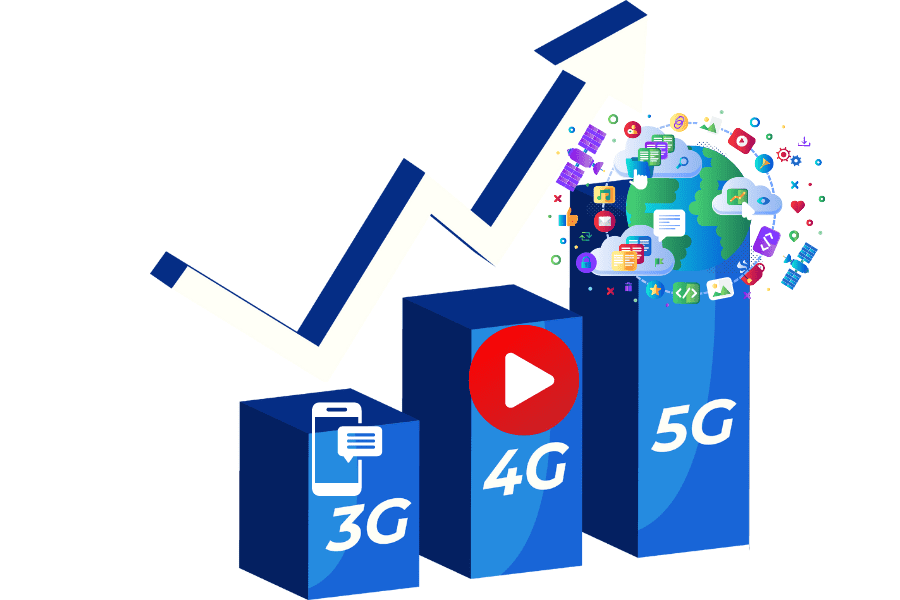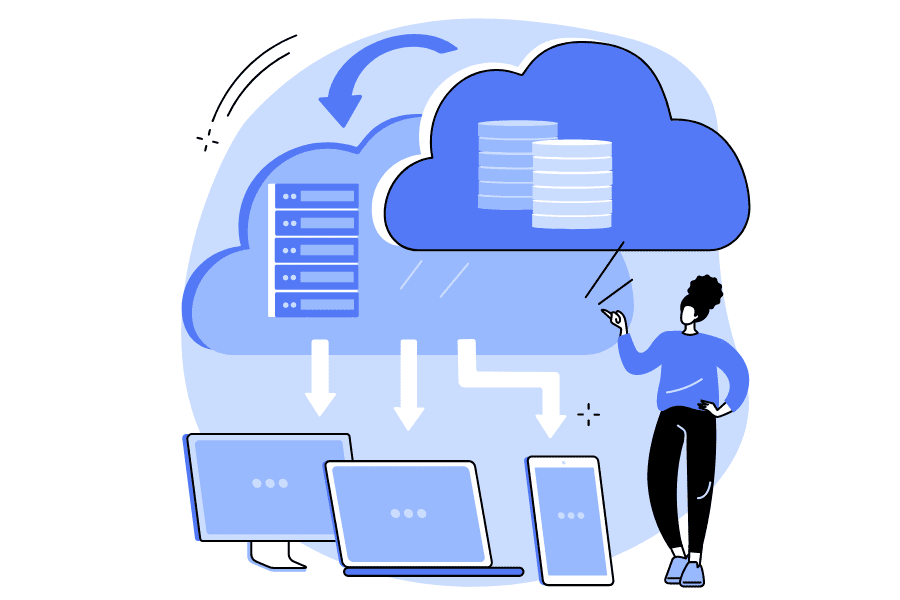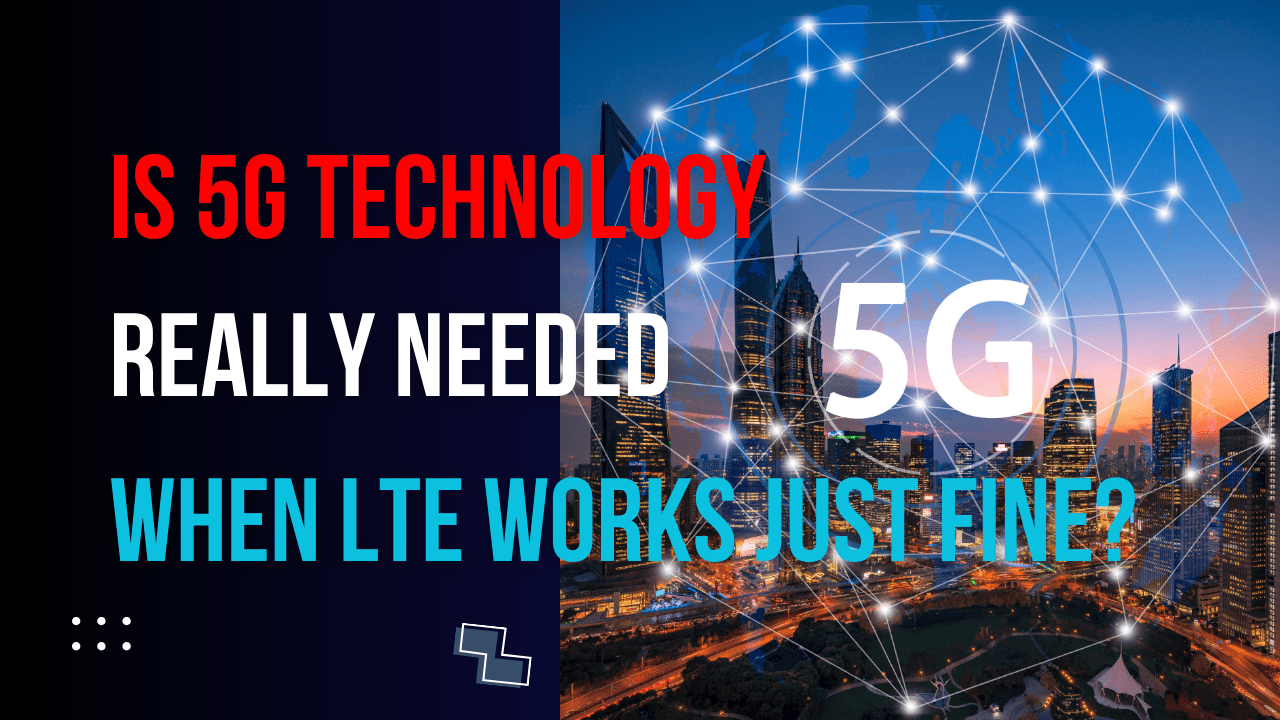Table of Contents

It’s important to understand the big step from Long-Term Evolution (LTE) to 5G technology in today’s quickly changing digital world. The goal of this blog post is to make these tools less mysterious so that everyone can use them.
The Difference Between LTE and 5G
LTE, or 4G, has been the main way that phones link to the internet because it’s reliable and has good speeds. On the other hand, 5G is going to change all of this. When compared to LTE, 5G has much faster speeds, less delay, and more bandwidth. This means you can connect more devices at once and download and watch content more quickly.
To better understand the differences, let’s look at a comparative table highlighting the pros and cons of LTE and 5G:
| Feature | LTE (4G) | 5G |
|---|---|---|
| Speed | Up to 1 Gbps | Up to 10 Gbps or higher |
| Latency | Around 50 milliseconds | As low as 1 millisecond |
| Capacity | Supports 100,000 devices per square km | Supports 1 million devices per square km |
| Bandwidth | Up to 20 MHz | Up to 100 MHz (and beyond with mmWave) |
| Energy Efficiency | Less energy efficient | More energy efficient |
| Application | Suitable for general mobile browsing, video streaming | Ideal for IoT, autonomous vehicles, smart cities, real-time analytics |
| Pros | Widespread availability, well-established infrastructure | Higher speed and capacity, lower latency, enables advanced applications |
| Cons | Limited in speed and capacity, higher latency | Requires new infrastructure, limited coverage currently |
Edge Computing in 5G

Edge computing is the process of handling data closer to where it is being created instead of in a central computer warehouse. This is especially important when it comes to 5G for a number of reasons:
- Less delay: Edge computing cuts down on delay by handling data close to where it comes from. This is very important in a 5G network for apps that need to respond in real time or very close to real time, like self-driving cars that need to quickly handle huge amounts of data from their sensors in order to make decisions.
- Edge computing processes a lot of data locally, so it’s not necessary to send all of it back to a central data center. This saves bandwidth. This method cuts down on internet use, which is important because IoT devices produce a lot of data.
- Better Privacy and Security: Processing data locally can make privacy and security better. If you don’t send private information over long distances, it’s less likely to be intercepted or stolen.
- Creating More Complex Apps: Edge computing makes it possible for more complex apps like augmented reality (AR) and virtual reality (VR), which need a lot of processing power close to the user to work well and without lag.
Network Slicing in 5G
A idea called “network slicing” lets you build several virtual networks on top of a single 5G network infrastructure. Each “slice” is its own separate, end-to-end network that is designed to meet the needs of a different service or application. Important parts are:
- Customization for Different Needs: Network splitting makes it possible to change networks to fit different uses or requirements. One slice could be set up to work best with IoT devices that need low power and bandwidth, while another could be made to work best with high-speed data services.
- Effectiveness and adaptability: This technology makes the network more useful. Operators can flexibly assign resources based on demand, which means that all services can run at their best without having to use different physical networks.
- Better Quality of Service (QoS): Network slicing keeps important services, like emergency messaging, from being harmed by traffic in other parts of the network. It is possible for each slice to have its own QoS parameters, which ensures speed and stability.
- Support for a Wide Range of apps: Network slicing allows for a wide range of apps to use the same infrastructure. These include ultra-reliable low-latency communications (URLLC) for IoT and industrial automation, as well as massive machine-type communications (mMTC) for IoT.
To sum up, edge computing and network slicing are important parts of 5G because they make the network experience faster, safer, and more flexible. They make 5G a flexible and strong technology for the modern digital era by letting it work with many different uses, from IoT to important real-time services.
Utilizing 5G Technology

There are many more ways to use 5G technology besides just making personal contact devices better. Its cutting edge features will completely change many fields and make way for innovations that were once thought to be impossible. Let us look at some examples of how 5G technology is being used in different areas:
Autonomous Vehicles
This is one of the most expected uses of 5G: making cars that drive themselves. 5G’s low delay and fast data flow are necessary for self-driving cars to be able to talk to each other in real time. For navigation, finding obstacles, and making quick decisions, these cars have to handle a huge amount of input from many sensors. 5G makes sure that this information is quickly processed and sent, which makes self-driving cars safer and more useful.
Smart Cities
5G technology is one of the most important parts of making towns smart. It lets many devices and systems, like traffic lights and public transportation, talk to each other, which makes cities more efficient and environmentally friendly. For example, 5G can help manage traffic in real time, which can cut down on traffic jams and make better use of energy through smart grids. This connectivity not only makes the city work better, but it also makes life better for the people who live there.
Telemedicine and Healthcare
In healthcare, 5G opens the door to telemedicine, which lets doctors and patients talk and get evaluations from afar. This can be especially helpful in rural or underdeveloped areas. Also, 5G’s low delay is very important for remote surgeries, where doctors can handle robots in real time from a different place. This technology also makes it possible to send big medical pictures very quickly, which speeds up and improves the quality of medical care.
Industrial Automation
The manufacturing industry stands to gain a lot from 5G because it will make industrial technology better. With 5G, companies can set up robotic systems that are smarter and more flexible. This includes using sensors and tools that are linked and can talk to each other in real time. This makes things more efficient, cuts down on downtime, and makes things safer.
Entertainment and Media
5G is changing how material is made and consumed in the media and entertainment businesses. It lets you watch high-definition video without buffering. It also changes the game for augmented reality (AR) and virtual reality (VR) experiences by giving them the speed and bandwidth they need for engaging, high-quality experiences.
Internet of Things (IoT)
5G is a key part of making IoT work as well as it can. It can connect thousands of devices in a small space, which makes it possible to build huge networks of devices that are all linked to each other. These networks can include everything from smart home tools to industrial sensors. In both domestic and business settings, this connection makes things smarter and more responsive.
Emergency Services
5G can help emergency services communicate quickly and reliably, which is very important in dangerous scenarios. It gives rescue workers better ways to communicate and access to information in real time, which can be very important in saving lives.
The Perception of 5G in Mobile Phone Apps
When 5G technology is added to mobile phone apps, it changes a lot about how users interact with and use these apps. Different people have different ideas about how 5G will affect apps on mobile phones. This is mostly because the technology is still being rolled out slowly and apps aren’t fully developed yet. First, let’s talk about how 5G is seen in mobile apps and what it means for the normal user.
Enhanced User Experience
One of the best things about 5G for mobile apps right now is that it makes the user experience better. Because 5G has faster speeds and less delay, apps can work better and more quickly. This change is most obvious in apps that need to be connected to the internet all the time, like social media sites, streaming services, and online games. Users notice less buffering, faster loading times, and more immediate exchanges, all of which make the experience smoother and more fun.
Potential for New App Capabilities
5G makes it possible for mobile apps to do things that weren’t possible before because of network limitations. For example, augmented reality (AR) and virtual reality (VR) apps can now work better with 5G, giving users better, more realistic experiences without the lag that these apps often have on 4G networks. Similarly, 5G’s lower delay and faster speeds are very helpful for apps that need to process and send data in real time, like those used for videoconferencing or live broadcasts.
Gradual Adoption and Awareness
Even with these improvements, people’s ideas about 5G in mobile apps are still changing. A lot of people still haven’t fully experienced the benefits of 5G, in part because the networks are still being set up all over the world. Along with that, not all cell phones can connect to 5G networks, and not all places have 5G service. This means that a lot of users are still using 4G networks.
App Development and Optimization
The current state of app creation is another thing that affects how people think about 5G in mobile apps. 5G has more features than 4G, but apps need to be either specially made or updated to fully use these features. This process of development is still going on, with app makers slowly making their goods work better with 5G. As more apps are updated to work better with 5G, users will start to notice bigger differences between how well 5G works and how well 4G works.
Varied User Experiences
The experience of using 5G-enabled apps can be very different for each person, based on the type of app, where they are, and which 5G network they are connected to. Users might not notice a big difference in how they use an app right away, especially if the app doesn’t need a lot of data or low delay. However, the difference can be very clear for real-time and data-heavy apps.
The Future of Mobile Apps with 5G
The effects of 5G technology on mobile apps are likely to grow as it continues to improve and spread. Developers are looking into new features and options that weren’t possible with 4G. This could lead to a new wave of unique apps that are made to make the most of 5G.
Overall, how we think about 5G in mobile apps right now is a mix of what we expect and what we’re actually experiencing. However, it’s clear that 5G will make a big difference in how we use mobile apps. We can expect a big change in how apps work and perform as the technology gets better and easier to get. This will give users a greater, more efficient, and more engaging experience.
The Necessity of 5G in the AI Era
It’s becoming clearer that 5G technology is needed as we move into the age of artificial intelligence (AI). AI systems need to quickly process and send huge amounts of data, and 5G’s unique features make it an important part of making AI apps reach their full potential. In this age of AI, let’s look at why 5G is so important.
Facilitating Massive Data Transmission
AI systems need data to work well. The better and more accurate these systems are, the more data they can handle. 5G technology is very important in this case because it can send huge amounts of data at speeds that have never been seen before. This feature is very important for AI apps that need to analyze data in real time, like predictive maintenance in factories or real-time traffic control in smart cities.
Enabling Low Latency for Real-Time AI Responses
Low latency is an important condition for many AI apps, especially those that need to work in real time. The fact that 5G can cut delay down to as little as 1 millisecond is huge for AI apps. For example, in self-driving cars, making split-second choices based on real-time data processing can mean the difference between a safe trip and one that could end in an accident. In the same way, AI-powered testing tools and robotic treatments need very little downtime to make sure they work perfectly and accurately.
Supporting the Internet of Things (IoT) and Edge AI
A big reason for AI progress is the growing number of IoT gadgets. The ability of 5G to connect millions of devices per square kilometer makes the IoT network bigger and stronger. This better connection is necessary to collect the large amounts of different types of data that are needed to teach and run AI programs. 5G also includes edge computing, which lets this data be processed closer to where it is created, which is very important for edge AI apps. This mix of 5G and edge computing makes it less important to use data centers far away, speeds up AI processing, and lowers delay.
Accelerating AI Innovation Across Industries
5G has an effect on AI that goes beyond one industry. 5G can improve individual shopping experiences in stores that use AI by making data analysis faster and more efficient. AI and IoT, backed by 5G, can make farming smarter by letting farmers watch their crops in real time and make decisions based on data. When AI algorithms are paired with 5G, they can make entertainment more immersive and involved. For example, personalized content streaming and improved AR/VR features are two examples.
Enhancing Cloud-Based AI Services
5G is also a big part of how cloud-based AI services are getting better. 5G’s fast speeds and low latency make it easier to run AI apps in the cloud. This means that users can access powerful AI tools and data on their devices without needing a lot of computing power locally. This opening up of AI to more people creates chances for small businesses and individual workers, encouraging new ideas and creativity.
Conclusion
Even though LTE has been useful, 5G opens up a lot of new options, especially when it comes to AI and IoT. It’s not just an upgrade; it’s a must for the future we’re moving into because it has faster speeds, less delay, and more space.
Additional Considerations
- Environmental Effects: Another important thing to think about is how 5G will affect the earth. Because 5G is more efficient, it could mean that less energy is used per unit of data.
- Concerns about security: As we depend more on digital networks, it’s important to understand and improve 5G security.
5G isn’t just a new technology; it’s the basis for a future that is smarter, more linked, and more efficient. As we use this technology, it opens the door to new ideas that we haven’t even thought of yet.
Discover More
If this article made you happy and taught you something, I’m sure our next article will do the same for you. Each piece is carefully written to help you understand things better and enjoy reading more. So, to keep exploring and having fun, just click on this link to go to our next story.
Exploring Keyboard Layouts: A Journey Beyond QWERTY – ReViewMaster DEN (rvmden.com)



